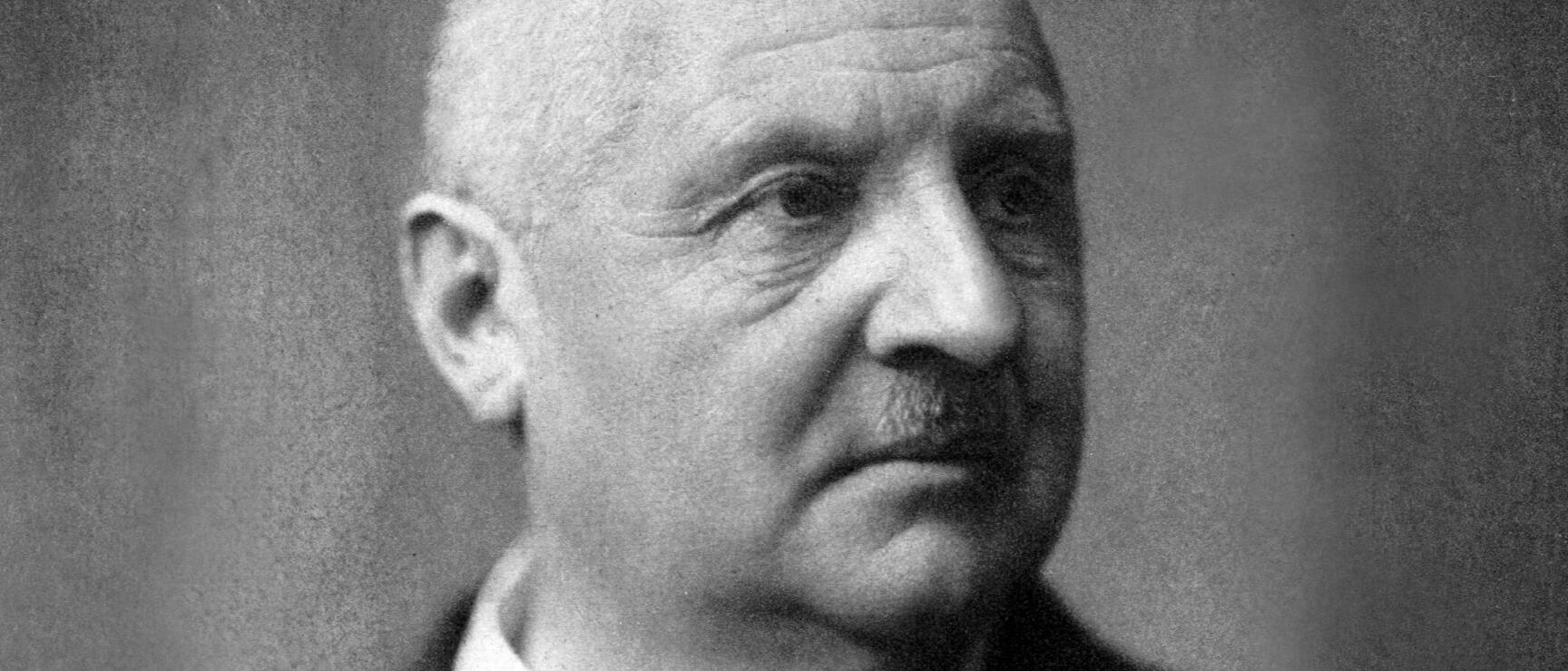
Anton Bruckner
Life and work of the Austrian composer
Born into a family of teachers in Ansfelden, Upper Austria, Anton Bruckner was introduced to music at an early age. Even as a young man, he made a name for himself as a virtuoso organist—his gift for improvisation captivated audiences far beyond his home region.
Yet despite his musical brilliance, Bruckner remained something of an outsider throughout his life. Eccentric and grounded, deeply connected to his rural roots, he spoke in dialect, dressed modestly, and never truly gained acceptance in Vienna’s high society. His path as a composer was all the more unusual: devoted passionately to the symphony, he spent decades striving for recognition. The Viennese cultural elite found his music difficult, regarding it as unwieldy, obscure, and at times even megalomaniacal.
He was also surrounded by curious anecdotes. Bruckner was said to suffer from an obsessive need to count—steps, windows, even the smallest details in his scores. His repeated, unsuccessful marriage proposals added to his image as a colourful character—somewhere between genius and eccentric.
And yet, in his later years, Bruckner was celebrated as a master symphonist and honoured with numerous awards. His approach to composition—idiosyncratic, visionary, deeply emotional—breathed new life into a genre many had considered exhausted.
To this day, Anton Bruckner is regarded as one of the most important composers of his time. A musical maverick who never compromised—and who left a lasting legacy precisely because of it.
Did you know? ... that the iconic riff of "Seven Nation Army" by the White Stripes, a staple in rock playlists and at international football matches, is inspired by Anton Bruckner’s 5th Symphony?
A group of Belgian fans once brought the song to the stadium during a triumphant game of the Belgian team. From there, it spread like wildfire across the entire world.
Listen for yourself:
Early talent
Anton Bruckner was born in 1824 in Ansfelden, the eldest of 11 children. His father, a village schoolteacher and church organist, introduced him to music early on—especially church music. Bruckner learned the violin, piano, and organ, and was already deputising as an organist by the age of 10.
Following his father’s death, he was sent to St. Florian’s Abbey at 12, where he lived as a choirboy and received organ lessons.
Though he worked as a teacher and organist, music was his true calling. He composed and improvised in his spare time—often after long days of physical labour. For more than three decades, he pursued his musical development with tireless dedication.
Bruckner’s career takes off
At the age of 31, Bruckner took the leap into professional music. In 1855, he successfully auditioned to become cathedral organist in Linz. His First Symphony premiered in the Redoutensaal in 1868 to great acclaim. That same year, he moved to Vienna to teach music theory and organ at the conservatory.
His career soon took off: he became court organist to the Emperor, taught for many years, composed tirelessly, and amazed audiences with his improvisational brilliance—performing in Nancy, Paris, Bad Ischl and to tens of thousands in London, where he was celebrated like a “pop star”.
The misunderstood virtuoso
Bruckner’s true passion was not the organ, but the symphony. Yet at the time, the symphonic form was seen as complete—Beethoven’s works regarded as the untouchable gold standard.
The Vienna Philharmonic refused to perform lengthy and technically demanding pieces during Bruckner’s lifetime. At the premiere of his Third Symphony at the Vienna Musikverein, most of the audience left partway through. In his frustration, Bruckner sought alternative venues outside Vienna and even appealed directly to Emperor Franz Joseph I to silence his fiercest critic: “Your Majesty, most graciously forbid Hanslick to write badly about me.”
It was not until the age of 60—just 12 years before his death—that Bruckner achieved the breakthrough he had longed for, with his Seventh Symphony.
The late tribute
Though Bruckner resisted convention, he longed for recognition and often requested letters of recommendation. Official acclaim came late—he was nearly 60 when he was finally appointed professor and recognised as a composer.
In 1886, he received the Knight’s Cross of the Order of Franz Joseph. The Emperor also supported him financially and helped publish two of his symphonies.
In 1895, now struggling to walk, Bruckner moved into a rent-free flat at the Upper Belvedere, where he worked on his Ninth Symphony until his death. The final movement remained unfinished.
Anton Bruckner died on 11 October 1896, aged 72, and was buried beneath the organ at St. Florian’s Abbey, as he had wished.
Today, he is regarded as a key innovator in classical music, whose work influenced generations to come.